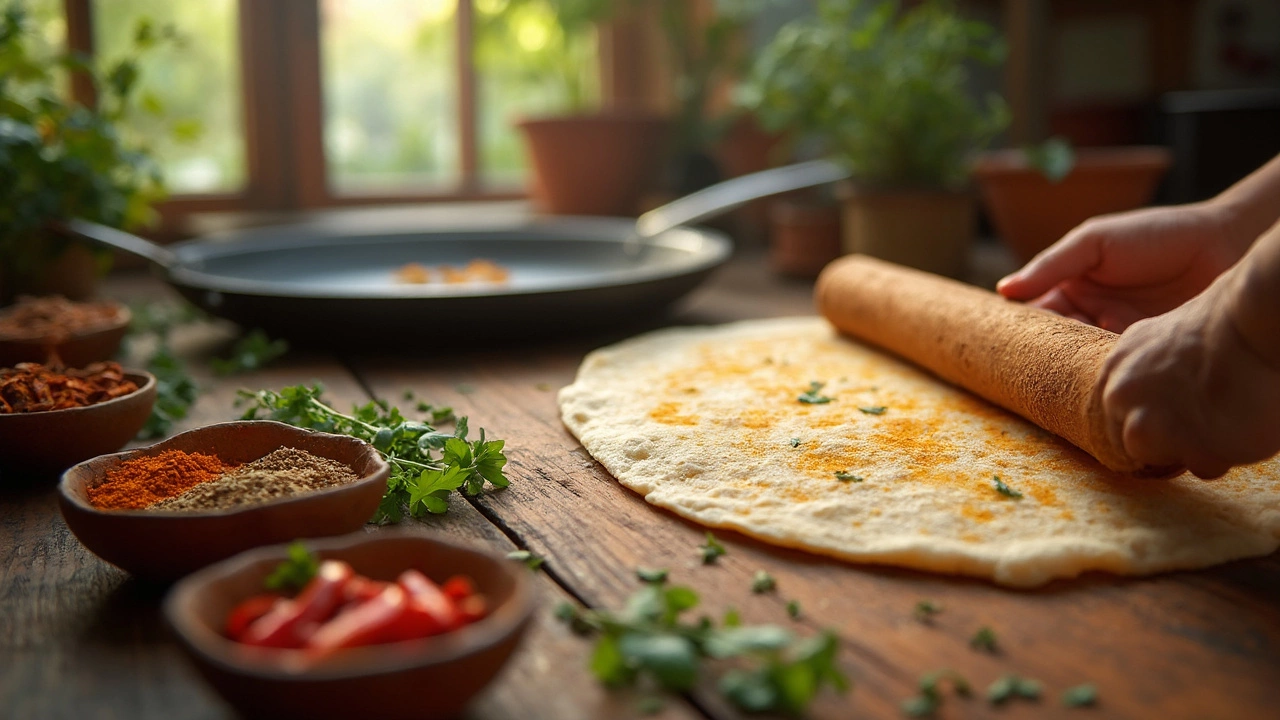Healthier Carbs: Nutritious Indian Staples for Balanced Living
When working with Healthier carbs, carbohydrate options that keep energy steady and add nutrients. Also known as nutritious carbs, it helps manage blood sugar, supports digestion, and fuels daily activities. A common first thought is dal, split peas or lentils used all over India, which not only supplies complex carbs but also packs protein and fiber. Another favorite is fruit, natural sweetness and vitamins in every bite. Both fit perfectly into the Healthier carbs mindset.
Why the carb choice matters
Most Indian meals revolve around rice or roti, but not all carbs are created equal. Refined white rice and all‑purpose flour spike blood sugar fast, while whole‑grain alternatives release energy slowly. Whole grains, like brown rice, millets, and quinoa, contain the bran and germ that keep fiber high. The semantic link is clear: Healthier carbs encompass whole grains, dal, and fruit. Swapping a cup of white rice for brown rice can cut glycemic impact by up to 30 % and increase magnesium intake, which directly supports heart health. Less refined sugar means fewer empty calories and a lower risk of type‑2 diabetes.
Speaking of sugar, the hidden culprit in many desserts and sweetened drinks is plain sucrose, which raises insulin quickly. Understanding that sugar, the simple carbohydrate that fuels rapid energy spikes is a key step toward smarter carb choices. By replacing sugary syrups with fresh fruit purees or using jaggery in moderation, you keep the sweet flavor without the crash.
These relationships form a web: Healthier carbs require whole grains to lower glycemic load; dal reduces reliance on simple sugars; and fruit adds natural sweetness plus micronutrients. The result is meals that satisfy hunger without unwanted spikes.
Now, let’s dive deeper into each player. Dal, a staple legume offering both carbs and protein is often overlooked as a carb source. A cup of cooked toor dal provides about 27 g of carbs, 14 g of protein, and 8 g of fiber—far better than the same portion of white rice, which offers roughly 45 g of carbs and almost no fiber. Soaking dal before cooking further improves digestibility and reduces antinutrients, thanks to the gentle breakdown of phytates. If you skip soaking, cooking time rises and some nutrients stay locked, but a quick rinse still yields a healthy dish.
When you pair dal with veggies or a modest amount of ghee, you get a balanced plate that hits the protein‑carb ratio many nutritionists recommend for active lifestyles. This makes dal a perfect base for dishes like dal tadka, sambar, or a hearty khichdi that feels like comfort food while staying light.
Switching focus to fruit, fresh produce that delivers natural carbs, vitamins, and antioxidants can transform desserts and snacks. A medium banana supplies about 27 g of carbs but also potassium, vitamin C, and resistant starch that feeds good gut bacteria. Berries, with lower sugar and higher fiber, are excellent for morning oatmeal or a side to spicy curries. Using fruit as a garnish for chaats, or blending mango into a lassi, lets you enjoy sweet flavors without adding refined sugar.
Whole grains deserve a spotlight too. Millets like ragi, jowar, and bajra are ancient Indian grains that have made a comeback thanks to their high calcium, iron, and fiber content. Cooking ragi porridge with milk (or plant‑based milk) gives a creamy breakfast that steadies energy until lunch. For dinner, try a millet‑based roti or swap half the regular rice with quinoa for a protein boost.
Practical swaps are easy to adopt. When a recipe calls for 2 cups of white rice, use 1 cup white rice + 1 cup brown rice or replace the entire portion with foxtail millet. In a roti dough, add a tablespoon of oat flour to increase fiber without changing taste. If a curry feels heavy, serve it over cauliflower rice to cut carbs while keeping the flavor.
Many wonder whether beloved dishes like biryani or dosa become unhealthy because of the carbs involved. The truth is nuanced: biryani can be balanced by using brown basmati, adding plenty of vegetables, and limiting oil. Dosa batter made from fermented rice and urad dal already contains protein; adding a bit of millets to the mix raises its nutritional profile.
All these tips point to one simple idea: Healthier carbs aren’t about cutting carbs entirely, but choosing the right ones. By mixing dal, whole grains, and fruit into everyday meals, you get steady energy, better digestion, and more vitamins without sacrificing taste.
Below, you’ll find a curated set of articles that break down these concepts even further—recipes, science‑backed nutrition facts, and step‑by‑step guides to help you turn theory into delicious, healthier meals.

Roti vs. White Bread: Choosing the Better Carb
Roti and white bread are both staple foods enjoyed worldwide, but when it comes to health, which is the better choice? While roti offers potential health benefits like lower calories and higher fiber content, white bread is convenient and widely available. This article explores the nutritional differences, providing practical tips for incorporating healthier carbs into your diet. Discover whether roti or white bread fits best into your healthy lifestyle.